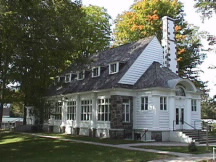Columns
Justin Trudeau Teaches Canadians How to Push an Empty Wheelbarrow
Today, February 1, 2021 marks four years since Prime Minister Justin Trudeau brazenly reversed one of the most important promises helping him win a Liberal majority government in 2015. During the election campaign, he solemnly pledged to upgrade parliamentary representation by replacing the outdated first-past-the-post electoral system and all its distortions and unfair results, with proportional representation. His endlessly repeated slogan, “Make Every Vote Count,” attracted voter support from thousands for whom Liberals were not normally first choice.
 |
|
STEP ONE: Open With a Solemn Promise Cheered by All Your Assembled Party Candidates |
By virtue of the October 19, 2015 election of a majority Liberal government, the party’s “campaign platform” – a metaphorical stage hammered together from campaign “planks” or promises upon which a party’s leader and candidates “stand for office” while pledging to voters they’ll implement such measures if elected – became constitutionally an “electoral mandate.” In other words, Canada’s sovereign people had by their cast ballots given powers of state to identifiable individuals for specified purposes, one being to change the system for electing MPs.
Ontario Fire College Can Have Vital Future
The Ontario Fire College at Gravenhurst has carved a special place in North America by training firefighters to higher standards of performance ever since the first 35-member class from across the province entered the lecture hall on October 21, 1957 to study “Atomic Fire Hazards in Industry,” ten months before Premier Les Frost officially opened the facility in August 1958. Each month 40 to 60 Ontario deliveries of radioactive materials were being shipped. “This means firefighters might well face radiation hazards in performing their duties,” explained Ontario Fire Marshal Bill Scott. “This course will acquaint you with these hazards and how to deal with them."
 |
| Scott Hall, formerly part of the world’s first free hospital for tuberculosis patients, is named for William J. Scott, LLB, KC, OBE, Ontario Fire Marshal for 27 years and driving force for the College. |
The Fire College became a model for the Ontario Police College which opened at Aylmer in January 1963. Gravenhurst’s facility was on grounds and in buildings formerly a tuberculosis hospital; Aylmer’s an abandoned training facility for World War II pilots, each deliberately apart from Ontario’s cities so students would focus and feel special, as any kid who’s left home for campus understands.
EXCUSE ME, CAN YOU PLEASE TELL ME WHAT TIME IT IS?
This week’s shift to “Daylight Saving” is a reminder of just how complicated humans can make things when striving to impose efficient order by our invented constructs of “Time.”
For openers, as the world’s second-largest country, Canada’s transcontinental geography embraces six artificial “time zones.” From east to west, Newfoundland Standard, Atlantic Standard, Eastern Standard, Central Standard, Mountain Standard, and Pacific Standard zones put abrupt edges to the “time of day.” Starting from the “zero point” for time and meridians at the Royal Observatory in Greenwich, southeast of London, England, “Greenwich Mean Time” begins the westerly march of hours around the globe, marked off by meridians of longitude. An efficient measuring system should take no account of seas or borders, cities or farming zones, but politics and economics beat neatness of lines. The ninetieth meridian, just west of Thunder Bay, Ontario, being six zones removed from Greenwich, should be a time zone boundary but isn’t. The seventh hour west of Greenwich should start on the 105th meridian, running between Saskatoon and Regina, but it was set instead at the Saskatchewan-Manitoba border, the northern part of which is on the 102nd meridian, so all Saskatchewanians would live in the same time zone. Thus from the outset, compromises to accommodate human communities altered the measured boundary lines of land.
HUNDREDS OF MUSKOKA “HOME GIRLS” WORKED AT FARM HOMES
What about the girls?
Last week I wrote about Muskoka “Home Boys” who fought in the Great War. In a prior column I’d noted Muskoka, especially northern sections, had the highest number in Canada of Britain’s abandoned children who got resettled here from orphanage homes.
Britain’s class society meant “equality” was rare. So whenever we spot even-handed treatment, it draws attention. Yes, a century ago, Britons were abandoning girls to the streets just as readily as boys. Not by the hundreds, but in the thousands.
Rather than solve their social injustices, the British exported them to the colonies. The ships transporting “Home Children” to Canada carried as many or more girls than lads. Of the hundreds arriving in Muskoka as child workers in domestic service, most landed, just like the boys, at farms.
Huntsville’s Shelly Yearly has written a well-researched book about the North Muskoka experience as seen since through the lens of her Holinshead family’s Fairy Lake “Springfield Farm.” The presence of “Barnardo Children” on the farm, she forthrightly notes, “is a part of the family history that was not often discussed during my childhood.”
IRONY IN MUSKOKA HOME CHILDREN FIGHTING BRITAIN’S WAR
Britain’s “Home Children” overcame physical and emotional battering to become vital, community-building Canadians. Two weeks ago I wrote about these indigent waifs from slums, back alleys, and orphanage “homes” sent with one-way tickets as child labourers to Muskoka and elsewhere, girls in domestic service, boys on farms. That column produced an outpouring of grateful comments from Muskokans who know this family history as their own.
One reader, Joe Stratford of Gravenhurst, sees profound irony in Muskoka’s Home Children (adult version) “signing up in droves for The Great War, going back to fight for the homeland that discarded them, and to which they literally owed nothing.” Among such soldiers was Fred Stratford, Joe’s grandfather, a “Barnardo Boy.”
Enlisting was “likely the only good paying job they could find at the time,” reader Stratford suggests, and “the first opportunity to grasp something they’d been searching for their entire lives: RESPECT.” He’s right on both counts.
MUSKOKA’S HISTORIC SITES MEET ONTARIO’S ALTERNATE HISTORY
You might think historic site markers erected by Ontario’s Government around Muskoka are fixed in meaning. After all, what happened is unchangeable history, right?
A place is identified where something important, perhaps unique, took place. Historians and archeologists research to confirm the site qualifies. A scholarly statement of the locale’s significance is written. An official board gives the nod. An explanation in limited words is drafted, approved, and permanently cast in bronze. The plaque is ceremoniously unveiled. Ever after, impressed locals and tourists point out, read, and stand in awe upon ground were a milestone of history unfolded.
The very first such plaque in all Ontario was unveiled September 26, 1956 in Port Carling. Ontario Premier Leslie Frost and Muskoka MPP Robert Boyer, both avid local historians, had orchestrated the event and were joined by Reeve Bob Bennett, all Muskoka mayors, and 200 others as proceedings were broadcast over radio CFOR Orillia.
BRITAIN’S CASTOFF CHILDREN ENRICHED MUSKOKA’S CHARACTER
Last week’s column cast Prince Harry as another of Britain’s remittance men, those rebellious sons of privilege who blot their family’s prominent name and got banished to the colonies, maintained on a stipend dribbled out in small amounts by a local lawyer retained by the family and paid from trust funds it provided. Harry’s dad Prince Charles provides his rebelling son, a self-exiling remittance man, a modest $5 million a year. The cost of just his security alone is twice that amount. His rent should be high too, but the mystery owner of the $14-million estate, built atop an Indigenous burial ground at Vancouver Island’s Patricia Bay, may be waiving rent.
This week let’s contrast Harry to other British castoffs, the impoverished children sent to Muskoka between 1870 and 1930.
Called “Home Children” because they came from homes for orphans, the British out-of-sight out-of-mind scheme was to avoid addressing a real problem by exporting it. These children ranged from 6 months to mid-teens. They included orphans, indigent waifs, children put out by their families to work, and those who’d run away to escape abuse. Their work was slave labour, their housing the dank dark hideaways of Britain’s foul city slums, and they themselves symptoms of deeper social and economic injustices.
Index
Accountability in Government
British Empire Tatters
Culture
Democracy and Elections
Governance Conundrums
Health and Medicine
Heritage on Display
Indigenous Life
Movies & Books
Muskoka’s Vacation Economy
Policing
Retailing Challenges
Social Standing
War and Remembrance
Waste Management
Women’s Equality
Copyright © 2023 || Website Development by E-griculture.com
